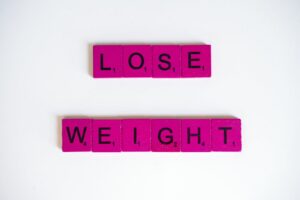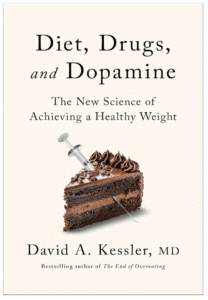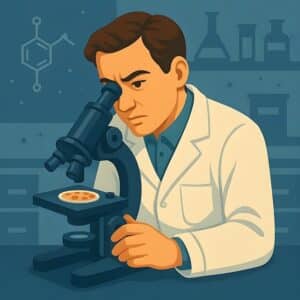New Monthly Obesity Injection Shows Promise

In a significant development for obesity treatment, a new once-a-month injection has shown impressive results in a clinical trial, helping participants lose up to 16% of their body weight (and even more under ideal conditions). The drug, maridebart cafraglutide (also called MariTide or AMG133), may reshape how obesity is managed, particularly for people seeking long-term, effective solutions without the hassle of weekly injections.
This breakthrough comes from a Phase 2 randomized controlled trial published in The New England Journal of Medicine. Conducted on nearly 600 adults with obesity — with or without type 2 diabetes — the study explored both the efficacy and safety of this long-acting peptide–antibody conjugate. Here’s what the results reveal, and why experts are paying attention.
Why this matters
Obesity is more than just a number on a scale — it’s a chronic metabolic condition that raises the risk for diseases such as type 2 diabetes, heart disease, and stroke. And it’s getting worse. According to the World Health Organization, as of 2022, 890 million adults and 160 million children worldwide were living with obesity.
Despite the availability of promising medications like semaglutide (Wegovy) and tirzepatide (Zepbound), there are still major challenges: frequent dosing schedules and issues with adherence. Many people struggle to stick with weekly injection regimens, and dropout rates are high.
That’s why maridebart cafraglutide is drawing attention. With dosing just once every four to eight weeks, this new drug could improve patient compliance and produce stronger long-term results.
The science behind maridebart cafraglutide
So, what is maridebart cafraglutide, exactly? It’s a dual-action molecule: A GLP-1 receptor agonist, which promotes satiety and lowers blood sugar, and a GIP receptor antagonist, which counteracts the hormone GIP (glucose-dependent insulinotropic polypeptide) believed to contribute to weight gain in certain contexts.
This dual mechanism is key. While some drugs activate the GIP receptor (like tirzepatide), others, like maridebart, block it. Both approaches, when combined with GLP-1 agonism, appear to support weight loss. It’s a surprising paradox and an area of ongoing research.
Maridebart’s extended half-life of 21 days — nearly triple that of the longest-acting once-weekly drugs — makes monthly or even bi-monthly administration possible. The innovation lies in how the peptides are bound to a monoclonal antibody, giving the drug its staying power.
The clinical trial’s design and participants
The Phase 2 trial included 592 adults, divided into 465 participants with obesity only and 127 participants with obesity and type 2 diabetes. Participants received injections every four or eight weeks, with varying doses. Some groups used dose escalation to minimize side effects.
After 52 weeks of treatment, researchers evaluated: body weight changes, blood sugar levels, body composition (fat vs. lean mass), and adverse events and side effects.
Substantial weight loss followed
Here’s what the study found after one year:
For participants without diabetes:
- 3% to 16.2% weight loss in the treatment group (based on real-world conditions).
- Up to 19.9% weight loss in the ideal-case (efficacy) analysis.
- Placebo group lost only 2.5%.
For participants with diabetes:
- 4% to 12.3% weight loss in the treatment group.
- Up to 17.0% in the efficacy analysis.
- Placebo group lost just 1.7%.
Notably, around half of the participants reached at least 15% total weight loss, a clinical benchmark known to drastically improve health. Under ideal trial conditions, 75% achieved that milestone.
Maridebart cafraglutide didn’t just help with weight — it also improved blood sugar control, particularly in participants with type 2 diabetes, and a fat (vs. lean mass) reduction of 36.8%.
Safety and side effects
While the trial showed promising results, it also raised some safety considerations. Gastrointestinal side effects were the most common, including nausea, vomiting, constipation, retching, and diarrhea. These symptoms were more frequent in participants who skipped dose escalation or started on higher doses.
Serious adverse events were rare. Gallbladder issues were slightly more common in the treatment group than in the placebo group. Importantly, no unexpected safety signals emerged during the trial. Side effects were generally manageable and transient.
Why dose escalation matters
Gradual dose escalation and a lower starting dose greatly improved tolerability. This has influenced the design of the ongoing Phase 3 trial, where all groups are now using a more careful ramp-up strategy.
With up to 20% weight loss, improvements in metabolic markers, and a safety profile comparable to other GLP-1-based drugs, this monthly injection could change the game, especially for those who struggle with weekly dosing. As the Phase 3 trial progresses, the medical community is watching closely. If results hold, maridebart cafraglutide could soon be a powerful new tool in the global fight against obesity.
Your responses and feedback are welcome!
Source: “Once-Monthly Maridebart Cafraglutide for the Treatment of Obesity — A Phase 2 Trial,” The New England Journal of Medicine, 6/23/25
Source: “Once-monthly obesity injection shows double-digit weight loss in major clinical trial,” News Medical, 6/24/25
Image by Anna Tarazevich/Pexels










 FAQs and Media Requests:
FAQs and Media Requests: 











